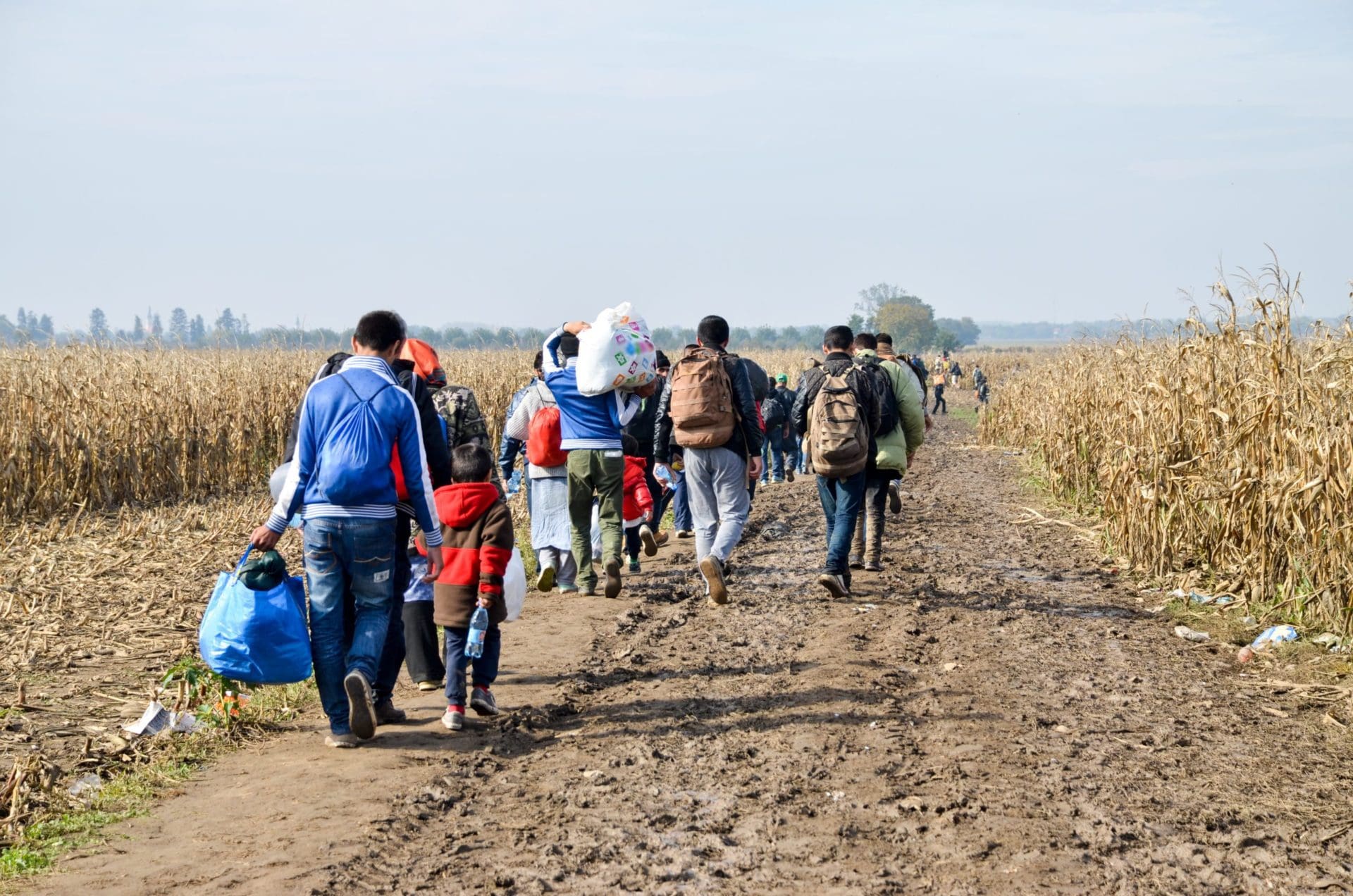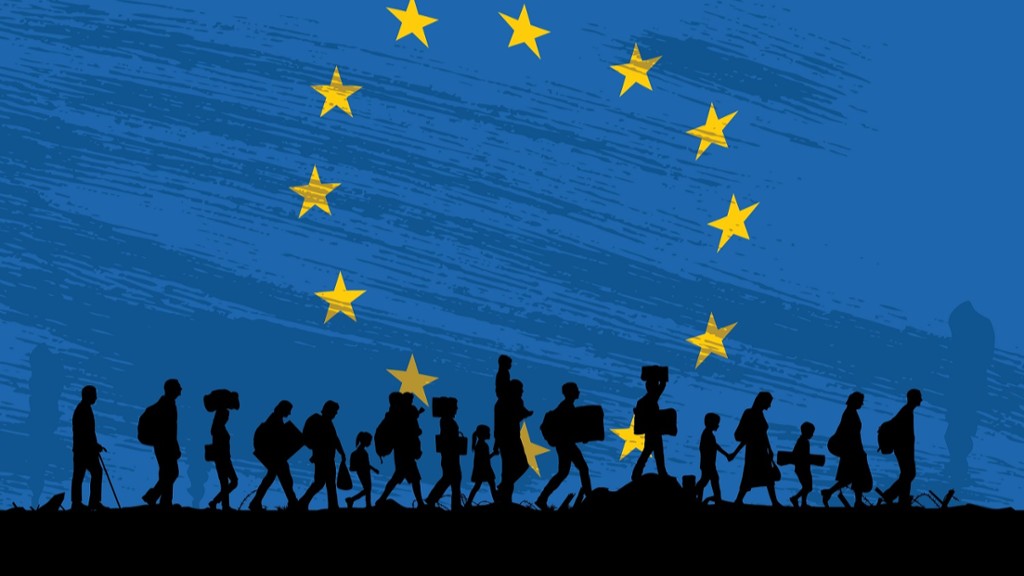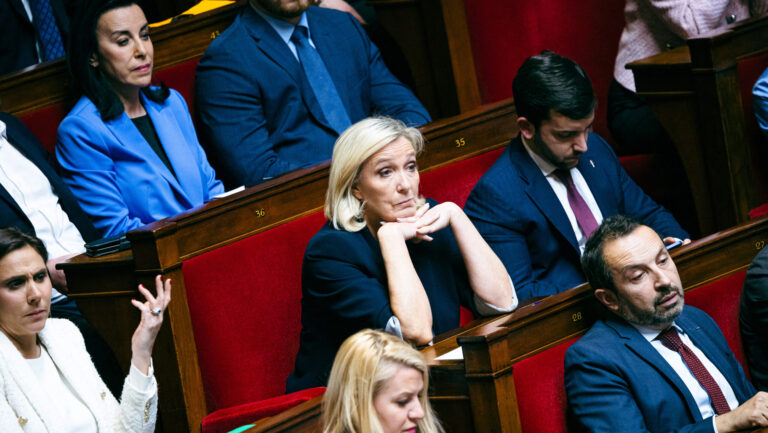The Case of the European Union
Migration affects both the sending and host countries in many regards. One key cluster of effects is connected to the world of the economy. In this article, we discuss the potential and actual impact of immigration on host economies, with a clear focus on Europe. To this end, we briefly overview the relevant literature, assess the European experience with particular attention to the migration crisis of 2015, and finally attempt to add some thoughts to the perennial debate on whether immigration is good or bad for the host economy.
Migration in the Twenty-First Century
People migrate for various reasons, including family reunification, better career and job opportunities, study, and even war, or fear of persecution, natural disasters, and so on. Migration can take either a legal or an illegal form, be of short or long duration, involve the crossing of international borders, or remain within national borders, but we find at least one common aspect to every type of migration: it has clear economic effects. It is not surprising that libraries are filled with valuable literature on the economic aspects of migration over the past decades. This interest is highly justified, as the global number of international migrants has increased markedly since the millennium, climbing to an estimated 281 million by 2020.1
In an era of globalization, mass migration is facilitated by technological advancements, while widened channels of mobility and the diasporas that have developed in top destination countries also create incentives adding to the complex decision to migrate. The classical South–North migration corridor dominates, that is, most migrants seek a new life in developed, possibly welfare countries with good job opportunities and generous social redistribution systems. And even though the majority still migrate within their own continent, more and more people opt to cross continents and settle far away from their homeland. Today’s key push factors that shape migratory processes typically include poor economic conditions (low wages, high unemployment, social insecurity, etc.) and the growing inequality witnessed in developing countries, but factors triggering massive displacements, such as wars and other armed conflicts or environmental deterioration, are also at play.
Against this background, the economic implications of contemporary migration gain increased relevance. International migration has far-reaching economic implications for both the sending and the host countries. In this article, we concentrate on the latter.
Why Migration Matters for the Host Economies
Developed countries receive millions of migrants every year, most of whom come legally on the grounds of family reunification and/or for job purposes. However, there is another sizeable group of migrants who—either legitimately or by abusing the asylum procedures and rules—claim to be refugees and seek asylum. These two larger categories make up the totality of persons arriving in destination countries. As we will see later, this distinction is justified in the case of Europe for specific reasons.
According to neoclassical economic theory, immigration—which we use here as a synonym of migration2—is a useful phenomenon that helps the receiving countries address their labour shortage (as the case may be), and pushes their labour market towards equilibrium. Increased labour supply benefits employers with job vacancies, and in the end triggers other favourable developments in the economy. Indeed, the labour market constitutes the key aspect for assessing the economic impact of migration, but unalloyed optimism is not justified in every case.
Large-scale immigration puts a downward pressure on wages, which is a logical consequence of the increased labour supply. For instance, if large numbers of qualified car mechanics come to work in a country, the indigenous car mechanics of the given country are faced with serious competition. The impact of such trends usually remains low at the national level,3 but it can be a source of social tensions in the host country. And this correlation assumes that all immigrants will finally work, which is not realistic, since a perfect match of job aptitudes and actual vacancies is unlikely to exist at the same time for thousands of people.
The pace and success of migrants’ integration into the labour market largely determines two further economic outcomes: the budgetary balance of immigration and its impact on economic growth
This brings us to another key factor, namely the interests of employers, that is, the demand side. What kind of labour force do they actually need? Well, it depends on the general development level of the economy, its sectoral composition, the sector in which they run their business, and so forth. If we take a look at today’s developed economies, intense demand for both low and high- qualified workers still exists, but the latter are growing in importance. On the one hand, traditional blue-collar sectors like agriculture, the construction industry, or hospitality remain a promising field for migrants. On the other hand, the demand for engineers, IT experts, or doctors is increasing dynamically nowadays. This latter circle is more valuable in other regards as well: they create more value-added services, pay more taxes and social contributions after their higher wages, consume more, and so on. The younger they are the more potential benefits they produce for the host countries. Indeed, these two key attributes determine how useful immigrants will finally be: their qualification level and skills, and their age. The pace and success of migrants’ integration into the labour market largely determines two further economic outcomes: the budgetary balance of immigration and its impact on economic growth. The fiscal outcome depends, among other things, on the specificities of the tax and social system, and on the number of economically inactive family members (children, pensioners) who are entitled to state support. But the key determinant is whether immigrants find their place in the labour market, and if so, how quickly they do so, and what jobs they can actually take.4 The longer they depend on the social welfare system of the host state, the larger the burden they will impose on the national budget. And as was the case with successful labour market integration, the younger and more qualified a migrant worker is, the higher the probability that their budgetary contribution will be positive.
As for economic growth, immigration boosts GDP growth in itself due to the simple fact that migrants start to work, pay taxes and contributions, consume, or, conversely, the state spends substantial amounts on supporting them, in the form of state services (e.g., healthcare), professional training, language courses, etc. Not surprisingly, the welfare effect of immigrants is also strongly dependent on their overall average qualification level. GDP per capita, as a better indicator of economic development, can change either positively or negatively as a consequence of immigration, showing correlation with the wages that migrant workers can earn in the jobs they take and their productivity.5
Overall, one can claim that migration matters for host economies mostly due to their labour market implications, which are the key determinants of other macroeconomic developments.
The European Experience and the Migration Crisis of 2015
In order to get a realistic picture of the economy-related migratory experiences of Europe, first we should specify which type of migration we are talking about. One field is (1) intra-EU migration, that is the free movement of EU citizens across the territory of the Union, including long-term stay and permanent settlement in other member states for job purposes. Another is (2) the legal immigration of third country nationals to the EU. Finally, our third category is (3) the influx of asylum seekers into the EU.
The free movement of EU citizens is one of the greatest achievements in the history of European integration. However, as is the case with migration in general, this is not all positive or all negative. For example, according to the estimates of D’Auria et al. (2008), the EU-15 countries as a whole benefited from the Eastern enlargement in terms of their economic growth, but this also holds true for the entire EU (i.e. including the new members as well) which saw a total GDP increase of 0.3 percentage points between 2004 and 2007 (corresponding to 30 billion euros). Naturally, the costs and benefits are not evenly distributed in this case either: the sending countries lost labour force (see brain-drain), while the receiving countries saw an increase in human capital. We can refer to some similar positive findings among the OECD countries.6 The benefits grasped by receiving member states were due to the fact that foreign EU citizens could rapidly integrate into their labour markets, soon becoming taxpayers. Overall, EU member states clearly compete for one another’s skilled labour force.
What about the two other mentioned categories of migration? For some practical reasons, we can discuss these together. The legal immigration of third country nationals to the EU shows a less bright picture compared to intra-EU migration in terms of economic consequences. According to Eurostat data, non- EU citizens have shown an activity rate 8–10 percentage points lower, on average, compared to the citizens of other EU member states in the whole EU between 2010 and 2020.7 Similarly, they have a much worse track record when it comes to unemployment statistics, exceeding the figures of the citizens of other EU member states by 10 percentage points on average in the period in question.8 So, this group of migrant workers are less active in member state labour markets, and are more exposed to losing their jobs. This implies that the hoped-for economic benefits of immigration (positive budgetary balance and additional GDP growth) cannot be realized in their entirety. However, the economic consequences show an even worse overall picture for asylum seekers who are granted international protection status in an EU member state. Their labour market integration is generally slower than of those who migrate legally for job purposes.9 This is explained by either objective factors (e.g. lack of work permits during the asylum procedure) or factors like missing qualifications, insufficient language knowledge, etc.
Although too short a time has elapsed to give a definitive assessment, the initial indications of this mass influx of asylum seekers are not especially promising
In 2015–2016, more than 1.4 million people arrived in the EU irregularly. These included genuine refugees from Syria and some other countries, as well as economic migrants, mostly from other countries in the Middle East and North Africa (MENA) region, likewise claiming to be refugees. The economic burden largely fell on Germany, which received more than one million asylum applications. Although too short a time has elapsed to give a definitive assessment, the initial indications of this mass influx of asylum seekers are not especially promising. The educational background of asylum seekers eligible to stay is apparently poorer than expected, their labour market integration is proving to be slow, while Germany has already spent ten billion euros in connection with this irregular wave of migration.10 It is not a coincidence that when these hardships became evident to the German political elite, the optimistic—sometimes even enthusiastic—voices have gradually become more muted. In 2015, many leading EU and member state politicians were enchanted by the idea that helping asylum seekers was their humanitarian duty, while this would address the demographic and labour problems of their own country at the same time. This expectation has proven overly hasty and optimistic in light of recent years’ experience.
Is Migration Good Enough for EU Host Countries?
Based on the above discussion, answering this question is anything but easy. The honest answer would be something like ‘it depends’. In the first place, it depends on the people who arrive (i.e. how qualified they are), in what numbers, and over what period of time. This is the simple part of the story. Taking a more academic approach, we might differentiate between the legal and illegal forms of migration. European experience suggests that legal migration can bring real benefits for the host economies, as is the case among EU member states. However, the costs and benefits of this type of migration are not evenly distributed, since sending countries tend to suffer a loss of active, skilled labour. But here the economic rationale can be traced from the side of the migrant-receiving member states: the nationals of other EU countries easily integrate into the foreign labour market, generate income, pay taxes and contributions, and thus contribute to GDP growth. These findings do not necessarily apply to third-country workers in the EU who are more likely to be dependent on the social system of the host country, and more exposed to the risk of unemployment. Asylum seekers who may stay in the EU have even worse prospects in the labour market, which seems to be evidenced by the aftermath of the migration crisis of 2015. Despite these difficulties, the idea of importing workers remains popular. For instance, the new German finance minister recently announced that his country would need nearly 390,000 immigrants a year to maintain the pace of its GDP growth and productivity.11 Using immigration to address labour shortage is clearly not just an economic policy decision: changing the composition of a society is expected to have other far-reaching consequences, and not necessarily favourable ones. Moreover, if a developed country with a declining and ageing population intends to remedy its demographic problems through immigration, then this should be done permanently, across decades, otherwise the result will be a one-off improvement only.12 In other words, promoting mass immigration is a self-sustaining process. And, unfortunately, the future outcome is more than uncertain—even in terms of the potential economic benefits.
NOTES
1 IOM, World Migration Report 2022 (International Organization for Migration: 2021), https:// publications.iom.int/books/world-migration- report-2022, accessed 25 January 2022.
2 This article addresses only the inflow of foreign people.
3 Holger Bonin, ‘Wage and Employment Effects of Immigration to Germany: Evidence from a Skill Group Approach’, Discussion Paper No. 1875 (IZA: 2005), http://ftp.iza.org/dp1875.pdf, accessed 24 January 2022.
4 OECD, International Migration Outlook (OECD: 2013), www.keepeek.com/Digital-Asset-Management/ oecd/social-issues-migration-health/international- migration-outlook-2013_migr_outlook-2013-en, accessed 24 January 2022.
5 Francesca D’Auria, Kieran Mc Morrow, and Karl Pichelmann, ‘Economic Impact of Migration Flows Following the 2004 EU Enlargement Process:
A Model-Based Analysis. European Commission – Economic and Financial Affairs Directorate General’, Economic Papers (2008), 349, http://ec.europa.eu/economy_finance/publications/publication13389_ en.pdf, accessed 19 January 2022.
6 Gianluca Orefice, ‘Skilled Migration and Economic Performances: Evidence from OECD Countries’, Institut de Recherces Économiques et Sociales deI’Université catholique de Louvain, Discussion Paper 2010-15 (UCL: April 2010), http://sites.uclouvain.be/ econ/DP/IRES/2010015.pdf, accessed 23 January 2022.
7 Eurostat (2021), https://ec.europa.eu/eurostat/ statistics-explained/index.php?title=Migrant_ integration_statistics_%E2%80%93_labour_market_ indicators#Labour_market_participation_.E2.80.94_ activity_rates, accessed 20 January 2022.
Eurostat (2021).
9 UNHCR, ‘Note on the Integration of Refugees in
the European Union’, unhcr.org (2007), www.unhcr.
org/463b462c4.pdf, accessed 15 January 2022.
10 Barbara Heß, ‘Potential of Asylum Applicants:
Analysis of “Social Component” Data Relating to
Applicants’ Social Structure’, Annual Report 2018
(BAMF: 2018), www.bamf.de/SharedDocs/Anlagen/
EN/Forschung/BerichtsreihenMigrationIntegration/
SoKo-Analysen/soko-jahresbericht-2018.pdf?__
blob=publicationFile&v=12, accessed 20 January
2022.
Euractiv, ‘Habeck will Arbeitskräftemangel durch Einwanderung verhindern’, euractiv.de (2022), www. euractiv.de/section/europakompakt/news/habeck- will-arbeitskraeftemangel-durch-einwanderung- verhindern/, accessed 27 January 2022.
12 Robert Rowthorn, ‘The Costs and Benefits of Large-scale Immigration. Exploring the Economic and Demographic Consequences for the UK’, Civitas (2015), www.civitas.org.uk/content/files/ largescaleimmigration-1.pdf, accessed 20 January 2022.








